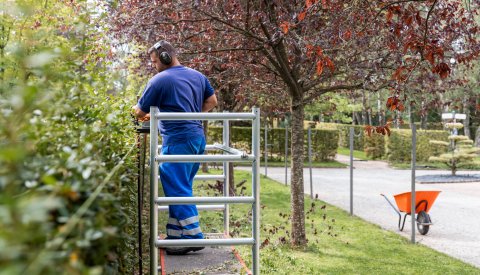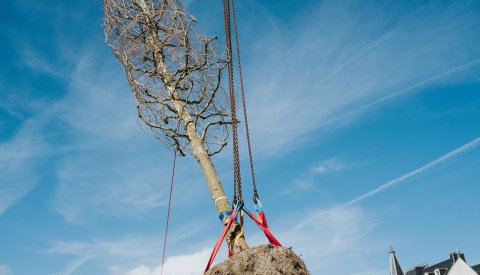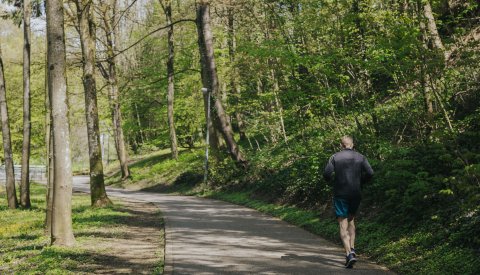CODIT principle
With every cut, injury or other intervention in the wood of a tree, there is a biological wound reaction. The work of American biologist and plant pathologist, Alex L. Shigo, in the 1980s opened up a new perspective on pruning and an understanding of the biology of trees. The CODIT principle (Compartmentalisation of decays in trees) emerged, i.e. the ability of a tree to effectively "compartmentalise" or contain a wound (opening) in order to prevent further damage. Such damage could include penetration of fungal spores, bacteria or even air.
Oak, lime and maple are good at compartmentalising. Conifers and birches are among those that are less good.
Tree roots
Trees get the nutrients they need through their roots. Unfortunately, since roots are partially or entirely hidden, most people don't know much about this system and are unaware of its importance. Roots form the essential foundations of all plants, including trees, ensuring the uptake of water and nutrients and providing stability to both the plant and the surrounding soil. The underground life of roots takes the form of a rich, diverse ecosystem that is fragile yet also capable of regenerating and is in constant conflict with the urban space.
Unfortunately, construction activities continue to cause significant damage to the root systems of trees time and again.
Young tree planting
Autumn is without a doubt the preferred planting season. The soil retains sufficient warmth late into autumn and, if replanted, the trees and shrubs can replace lost roots for the next season.
Quotes for trees are requested from nurseries from August onwards. Once the orders have been placed, deliveries are made between the end of October and the beginning of December. The trees are unloaded at the Parks Department and stored in a specially designated area. They are then grouped according to district, and by street if applicable, so that the gardening teams can start planting on-site as quickly as possible.
The street trees in Luxembourg City are predominantly planted with a trunk circumference of 16/18 cm as these dimensions ensure the greatest growth potential. Older and larger trees are used only occasionally as they become more difficult and take longer to grow as they increase in size.
Large trees are only planted in exceptional cases, e.g. if there is enough space and the crown of a larger tree would be more effective.
Preparation
Size of planting hole
The more space is available for the roots, the more they can develop. Aside from the water storage properties of the substrate, this is the best way to avoid drought.
For several years now, the Service Voirie (Department of Streets) has set aside just over 15 cubic metres of root space per tree for street trees planted at purpose-built "tree sites". The FLL requires a standard tree hole of 12 cubic metres. In the city, ideal conditions can be created for root development and thus also for tree growth.
Planting depth
A good approach for determining the planting depth is to mark the original height with a visible point (the tree is planted as it was in the nursery). If it is planted deeper, it is possible that the substrate or the soil will sink a little, with the end result that the tree will be sat too deep in the ground, which may cause growth and developmental disorders. It is therefore better to plant a little higher than too low.
Substrates used
The substrate used to fill the tree sites for street trees is sourced from a company in the Eifel region (short delivery distances) and consists of the volcanic components sand and clay.
The "humin" substrate has a grain size of 0-32 and is enriched with humic substances (decomposed organic matter), which prevents the leaching of nutrients. This soil composition, combined with an optimum pH value, facilitates good rooting.
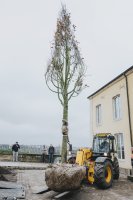
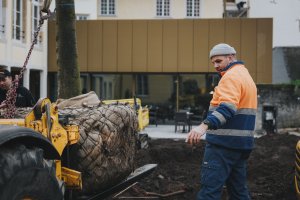
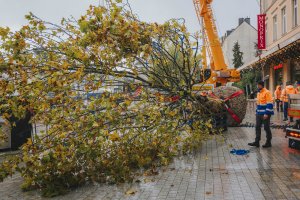

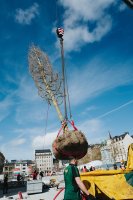
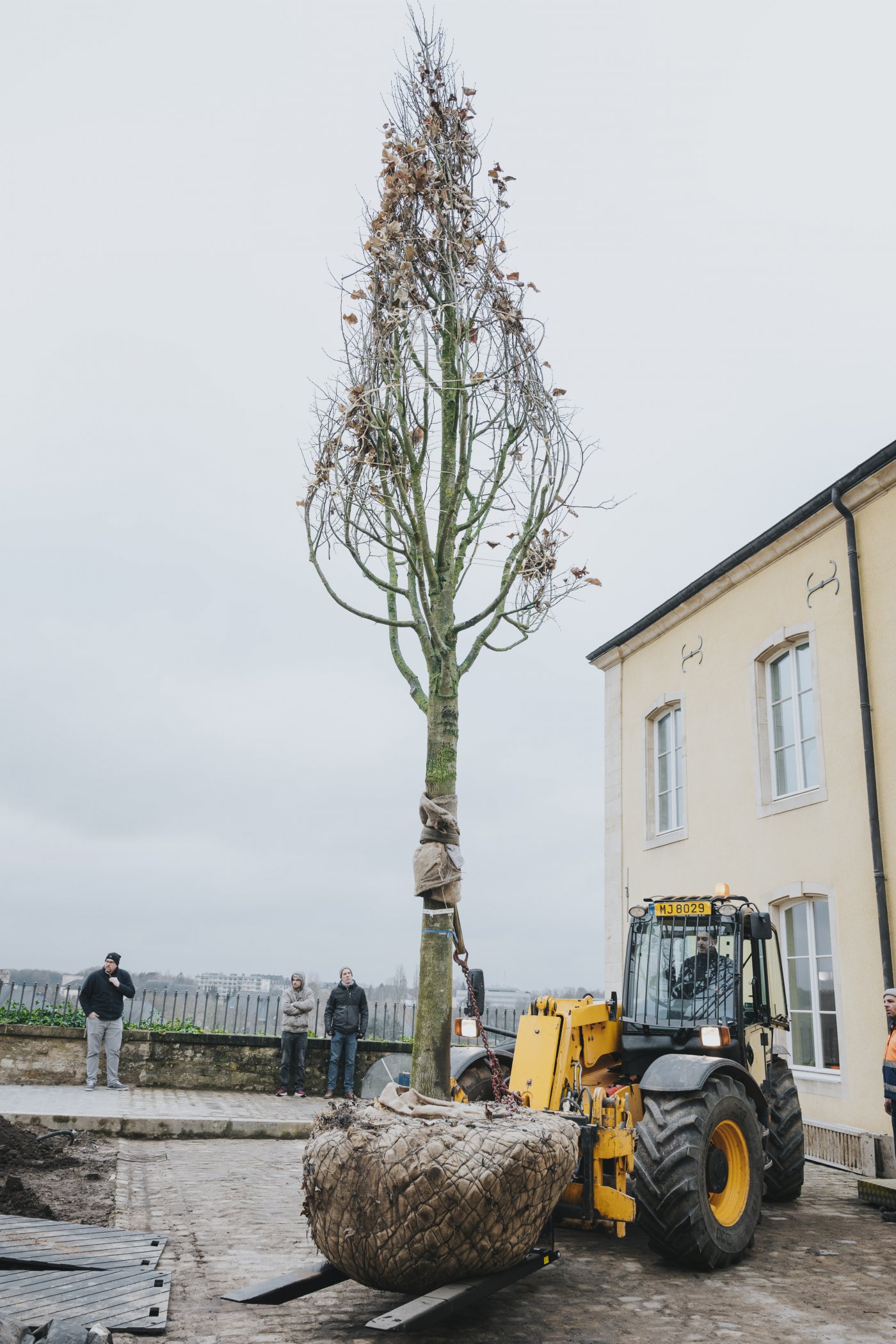
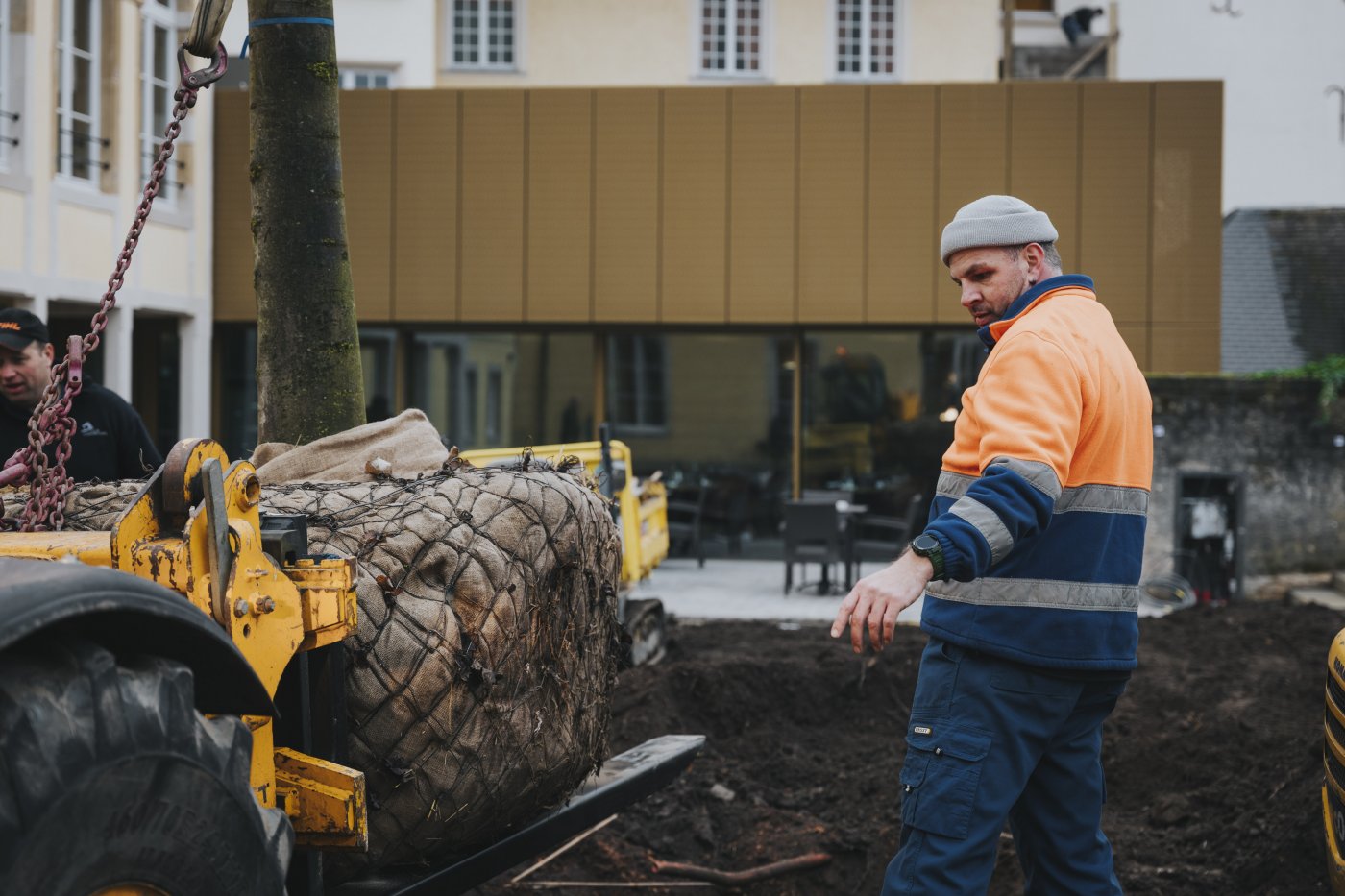
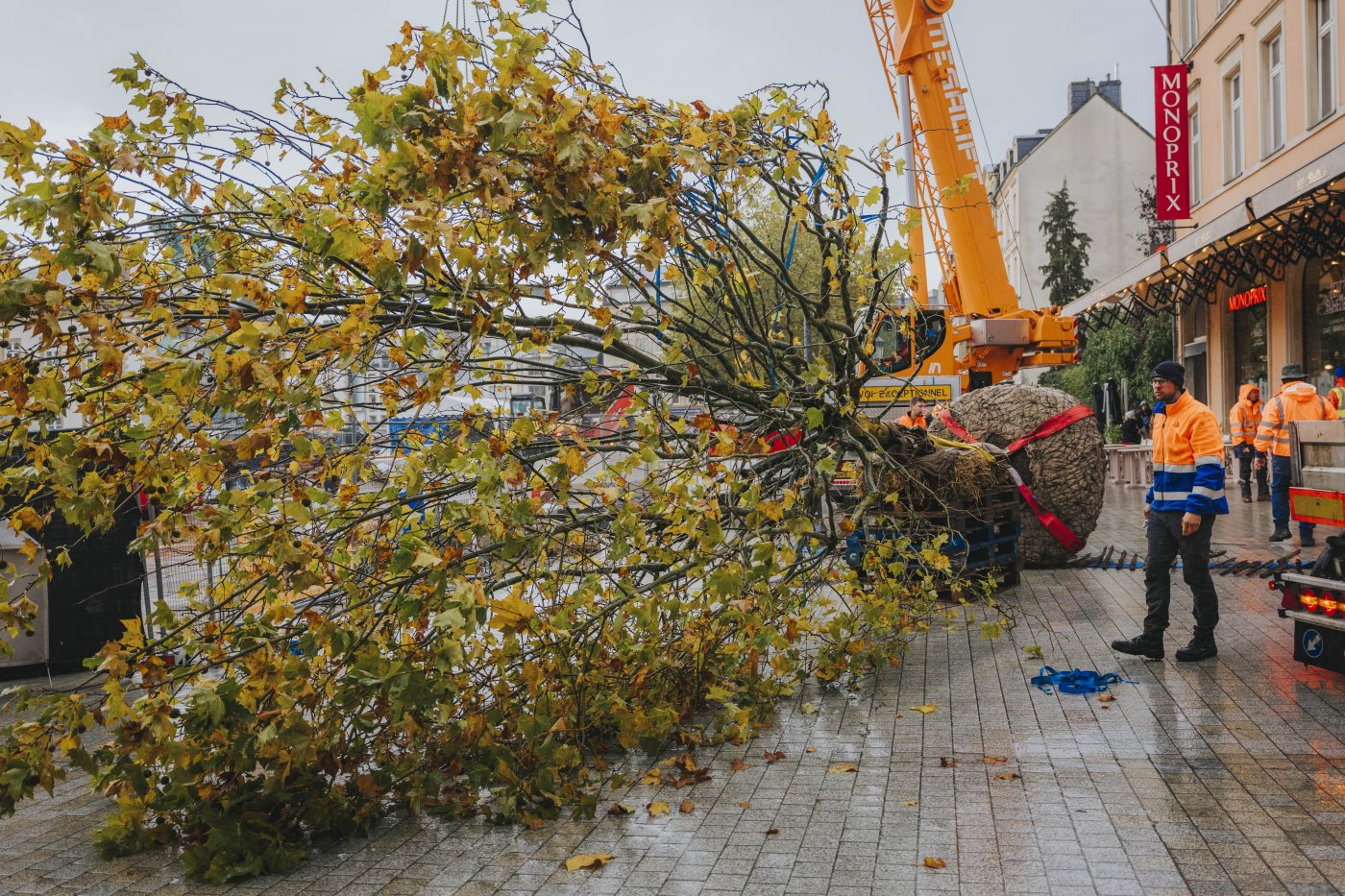

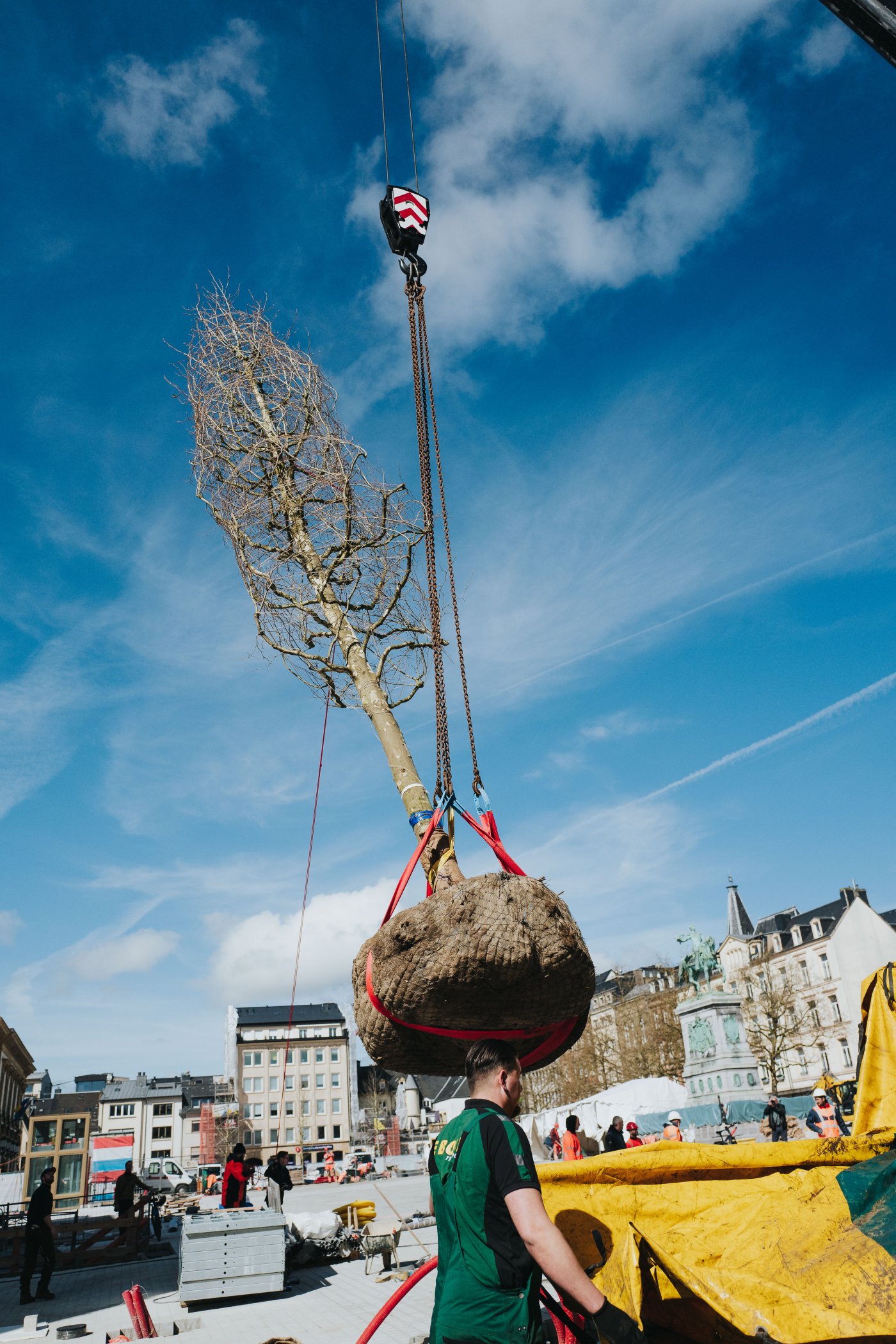
Pruning
Pruning, including formative pruning/training, is crucial to the future development of trees in urban areas.
Pruning is a very controversial topic among experts and non-experts alike. Some people talk about emotional pruning, along the lines of "I cut the tree so that it looks good" or "Everyone cuts they way they want".
The fact is that every cut made is an intrusion into the physiology (trunk, branch formation, root system) and metabolism of the tree. This means that removing branches fundamentally interferes with a tree's metabolism (loss of leaves for photosynthesis – loss of roots – uptake of water and nutrients).
The timing of pruning also plays a role from a tree biology perspective, as the tree tissue is best able to seal off the wound during the vegetation period.
Cutting times
- possible all year round, but if possible not during permafrost below -5° C
- from a tree biology perspective during the vegetation period, as trees are at their most active physiologically from March to October (therefore good reaction capacity).
The cut direction is also very important, with the branch ring being particularly relevant here.
Protecting trunks
Cracks
Lime (Tilia), maple (Acer) and beech (Fagus) are sensitive to excessive sunlight. In summer, temperatures of over 45 degrees Celsius can develop on the surface of the bark, which in turn results in heat cracks.
Frost crack can also occur in winter if the sun raises the temperature on the surface of the bark on cold, frosty winter days.
White paint
The newly planted trees in the city are all, without exception, treated with white paint to provide optimum protection. This paint consists of organic and inorganic binders, white dye, silicon dioxide, water, emulsifiers and granulated building materials. The product used is certified as non-toxic for plants, humans and animals and can therefore also be used in playgrounds. (Regulation (EC) No 1272/2008).
The white coating on trees reflects the sun's rays so that the trunk is not exposed to all of the radiation.
Irrigation
Irrigation systems have many advantages. The tree is supplied with water over a controlled period, while controlling the volume helps to save huge amounts of water.
For some years now, "irrigation bags" have also been used, which can be used to water trees in various volumes (from 50 to 150 litres).

